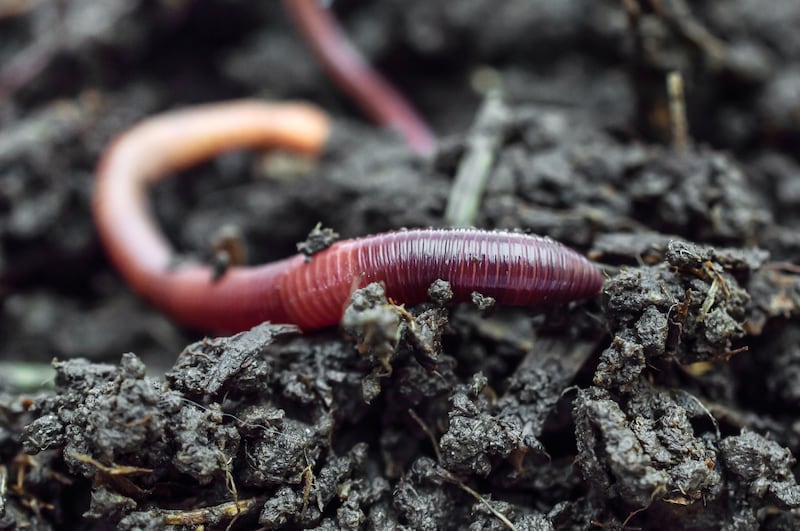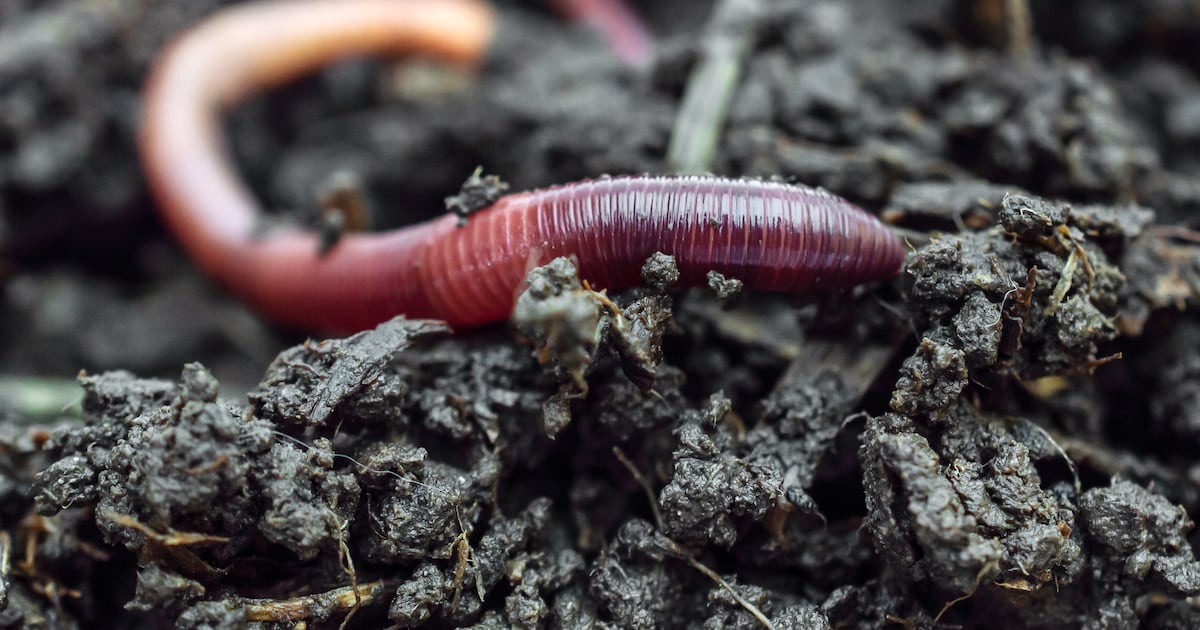 Earthworm on compost. (Getty Images/iStock)
Earthworm on compost. (Getty Images/iStock)
The loyal reader knows that compost is my go-to for almost everything. I use it for mulch and to put the soil food web back into soils. I am a compost nerd. The question: What to do in the winter when we don’t have access to our outdoor compost piles?
The best way to deal with compost in the winter is to maintain a worm bin. The worms do the composting for you as they digest organics and squeeze out a few bacteria to eat. In the process, they break down what they ingest. It is not thermal compost, but it is every bit as good.
The most difficult part of maintaining a worm bin is finding the worms in the first place. Once you do, feed them your kitchen scraps. Amazingly, a pound of worms will take down a pound of food waste every single day. Provided you don’t overload your bin, you should be able to make plenty of compost even in the winter.
There is a need to drain excess liquids produced in your worm bin. Most have a spout to open so you can collect liquids, which can be used on your houseplants and in your gardens. It helps to add a few sheets of newspaper — not this column, however — to your worm bin in order to absorb some of this liquid. This paper also serves as food for your worms.
Next is the a process known as bokashi. Food is fermented by special bacteria grown using rice bran. This process is different from decomposition. If you hop on the internet, you will see all manner of bokashi systems, mainly different bins in which to ferment your organics.
Bokashi fermentation is anaerobic. There is a distinct smell, described as pickle-like, to it, so it is made in closed containers. And you need to figure out how to use it in the winter. You could toss it all onto one spot on a garden bed and spread it around in the garden in the spring, or keep it in containers, which is a pain all winter long.
There is a special form of bokashi known as EM for “effective microorganisms,” but this is getting too deep into the weeds. It is a Korean system and has lots of ardent followers, and involves a limited number of microbes. They are, indeed, effective.
Moving on, there are now indoor composting machines designed to be used in your kitchen. These use electricity to speed the decomposition. While it sounds like a good idea, it sure doesn’t seem very sustainable, which is one of the reasons we use compost in the first place. Still, the idea is intriguing, no?
And, if you have enough room and the right location such as a basement or large, heated garage, you could actually use an outdoor compost tumbler indoors. It would help to have some starter soil to toss in with those first kitchen scraps to improve the biology.
Finally, you can always buy compost from local sources. There are even designer composts made for specific plants. Look for for perforation holes in the bags so you know you are not buying cooked microbes. You generally get what you pay for, with cheaper bags containing only partially decayed woody material.
Jeff’s Alaska Garden Calendar
Alaska Botanical Garden: Lights! In the Garden! Register for the ice sculpture contest. So much more at www.alaskabg.org.
Poinsettias: Here they come! Early. Keep them out of drafts and make sure the soil drains, even if you keep the red foil wrapped around the pot.

